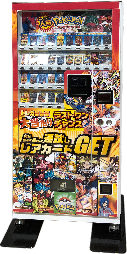Multi-Point Cash Flow Economics for Vending Enterprises
페이지 정보
작성자 Jay 작성일25-09-12 02:40 조회5회 댓글0건관련링크
본문

In the world of vending, cash moves in a rhythm that’s far more complex than a single line item on a balance sheet. Every machine is a miniature ecosystem where inflows and outflows happen on multiple fronts—restocking, maintenance, revenue collection, and even regulatory payments. Understanding the economics of these multi‑point cash flows is essential for turning a handful of machines into a profitable, scalable venture.
The Anatomy of a Multi‑Point Cash Flow
The cash flow of a vending machine can be divided into three main categories, each featuring distinct timing and traits:
Capital Expenditure (CapEx) – the initial outlay for buying or leasing, installing, and configuring the machine for a specific location. This is a one‑time outflow that must be recovered over the machine’s useful life.
Operating Expenses (OpEx) – recurring expenses that appear regularly. These cover:
Restocking: the expense of buying inventory and delivering it to the machine. Restocking frequency differs by product type and sales pace.
Maintenance & Repair: routine servicing, firmware updates, and emergency repairs. Some machines require periodic software upgrades that can be billed per unit or per location.
Utilities & Fees: in some regions, operators may pay for electricity, water, or local sales taxes.
Revenue Streams – the money that flows in from customer purchases. Revenue is usually gathered in several ways:
Daily Cash Collections: トレカ 自販機 at busy sites, operators might collect cash daily or every few days.
Remote Data Capture: machines equipped with IoT can transmit sales data in real time, allowing for electronic settlements with suppliers or distributors.
Promotional or Sponsorship Fees: others earn extra revenue by showing ads or partnering with brands.
Each of these points creates a distinct cash flow event. The challenge is to model them accurately so that decisions about inventory mix, pricing, and expansion are data‑driven.
Timing Matters: Cash Flow Cycles
Cash flow timing can mean the difference between a smooth operation and a liquidity crunch. Consider the following cycle:
Day 0: Machine is installed. CapEx is recorded.
Day 1–5: First restocking happens. OpEx for inventory is paid.
Day 2–30: Revenue accumulates. Cash is collected daily or weekly.
Day 15: Maintenance check is performed. Minor OpEx incurred.
Day 30: Second restocking plus another cash collection.
Revenue is continuous and unpredictable, so operators require a buffer for low sales or surprise maintenance costs. A rule of thumb is to reserve at least three months of OpEx, though many operators target a six‑month cushion.
Modeling Multi‑Point Cash Flows
A straightforward spreadsheet model can powerfully manage these flows. Here’s a skeleton you can use:
| Month | CapEx | Restocking | Maintenance | Revenue | Net Cash Flow |
|---|---|---|---|---|---|
| 1 | 10,000 | 1,200 | 150 | 8,500 | –2,850 |
| 2 | 0 | 1,200 | 150 | 9,000 | 7,650 |
| 3 | 0 | 1,200 | 150 | 9,500 | 8,150 |
| … | … | … | … | … | … |
Restocking is a recurring cost that may vary with seasonal demand.
Maintenance is minor but essential to keep the machine operational.
Revenue grows as the machine gains traction.
With this table you can calculate cumulative cash, break‑even point, and return on investment. Importantly, you can also run sensitivity analyses: what if restocking costs rise by 10%? What if daily revenue drops due to a new competitor? The model will show the impact on net cash flow.
Managing Cash Flow Risk
Cash flow complexity introduces several risk factors:
Demand Volatility: a sudden sales decline can result in unsold inventory and cash shortages. Reduce this risk by selecting flexible items with lower spoilage and keeping inventory turnover above 4–5.
Maintenance Surprises: unexpected repairs can inflate OpEx. Engaging a service provider with a fixed monthly fee changes variable costs into predictable ones.
Regulatory Changes: taxes or regulations may change the revenue mix. Stay informed via industry associations and plan contingency budgets for compliance costs.
Scaling with Cash Flow Discipline
When you’re ready to add more machines, the same principles apply, but scale complicates the picture. Each new machine introduces a new set of CapEx, OpEx, and revenue streams. The trick is to maintain a unified cash flow dashboard that aggregates all machines while still allowing drill‑down into individual performance.
Here are some scaling tips:
Centralize Procurement: bulk purchasing for multiple machines cuts per‑unit costs and streamlines restocking.
Automate Collections: IoT-enabled machines that transmit sales data and accept electronic payments diminish manual pickups, enhancing cash flow predictability.
Leverage Data Analytics: use sales data to forecast demand and adjust inventory levels preemptively, reducing waste and missed revenue opportunities.
The Bottom Line
Cash flows from vending are more than bookkeeping—they’re the business’s lifeblood. Deconstructing each event, timing its impact, and modeling interactions lets operators:
Maximize ROI: seeing how fast CapEx recovers shapes expansion choices.
Maintain Liquidity: forecasting cash flows keeps maintenance and restocking covered without short‑term loans.
Optimize Operations: analytics guide better product choices, pricing, and placement.
Building a solid cash flow model rewards operational confidence and financial stability. When every buck is accounted for and every flow anticipated, vending machines evolve into a predictable, profitable enterprise.
댓글목록
등록된 댓글이 없습니다.

